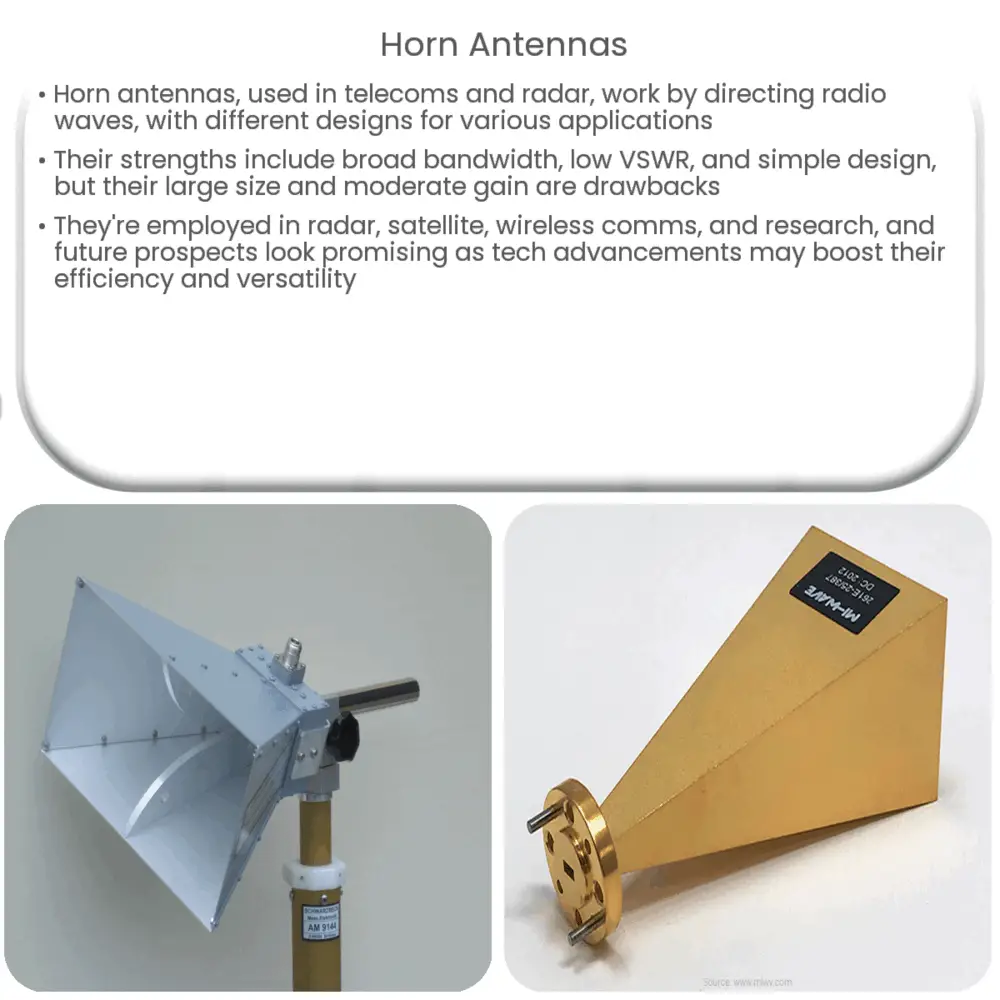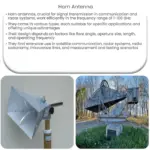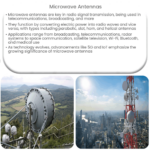Explore the fundamentals of horn antennas, their types, pros and cons, applications, and future prospects in our comprehensive guide.

Horn Antennas: An Introduction
A horn antenna or microwave horn is an antenna that consists of a flaring metal waveguide shaped like a horn to direct radio waves in a beam. Its main applications are in the field of telecommunications, particularly in satellite and radar systems.
The Principle Behind Horn Antennas
Horn antennas work on the principle of directing electromagnetic waves in a specific direction. They function by converting impedance-matching devices that modify the electromagnetic field in the waveguide into a free-space wave, and vice versa. The flaring of the horn helps to minimize the reflections of radio waves, which in turn enhances the antenna’s overall efficiency.
The Design and Types of Horn Antennas
There are different types of horn antennas, and their design usually depends on their intended application. Below is a list of some common types:
- Pyramidal Horn Antennas: These are the most common type of horn antenna. They have a rectangular cross-section and are often used in radar and surveillance systems.
- Exponential or Scalar Horn Antennas: The walls of these antennas flare out in a smooth curve. They are used in electromagnetic compatibility (EMC) testing and other high-frequency applications.
- Conical Horn Antennas: With a circular cross-section, these antennas are often used in monopulse radar and tracking systems.
- Corrugated Horn Antennas: These are designed with slots or grooves along the interior walls, helping to produce a nearly ideal radiation pattern with minimal side lobes.
Advantages and Disadvantages of Horn Antennas
Like any other technology, horn antennas have their strengths and weaknesses:
- Advantages: Horn antennas offer several benefits, such as low VSWR (Voltage Standing Wave Ratio), broad bandwidth, and moderate gain. They also have a simple design and are easy to feed, making them a preferred choice in various applications.
- Disadvantages: On the other hand, horn antennas may not be suitable for certain applications due to their relatively large size compared to other types of antennas. They may also lack the high gain needed for long-range applications.
Applications of Horn Antennas
Due to their versatile characteristics, horn antennas are used in a variety of applications:
- Radars: Horn antennas are extensively used in radar systems for surveillance, air-traffic control, and weather monitoring.
- Satellite Communications: They are employed in satellite systems for both receiving and transmitting signals.
- Wireless Communications: These antennas are commonly used in wireless communication systems for data transmission.
- Scientific Research: In scientific applications, they can be used for radio astronomy, microwave imaging, and electromagnetic compatibility testing.
Future Prospects of Horn Antennas
The future of horn antennas appears promising. As technology evolves, there will likely be improvements in horn antenna designs, making them smaller, more efficient, and more versatile. Further advancements in microwave and millimeter-wave technologies may also lead to increased utilization of horn antennas in a range of applications, from telecommunications to scientific research.
Conclusion
In conclusion, horn antennas are an essential component in many fields, notably in telecommunications and radar systems. While they have their limitations, their advantages such as broad bandwidth, low VSWR, and simplicity in design make them an integral part of many systems. As technology progresses, we can expect continued evolution and improvements in horn antennas, allowing them to meet a diverse range of demands and challenges in the years to come.




